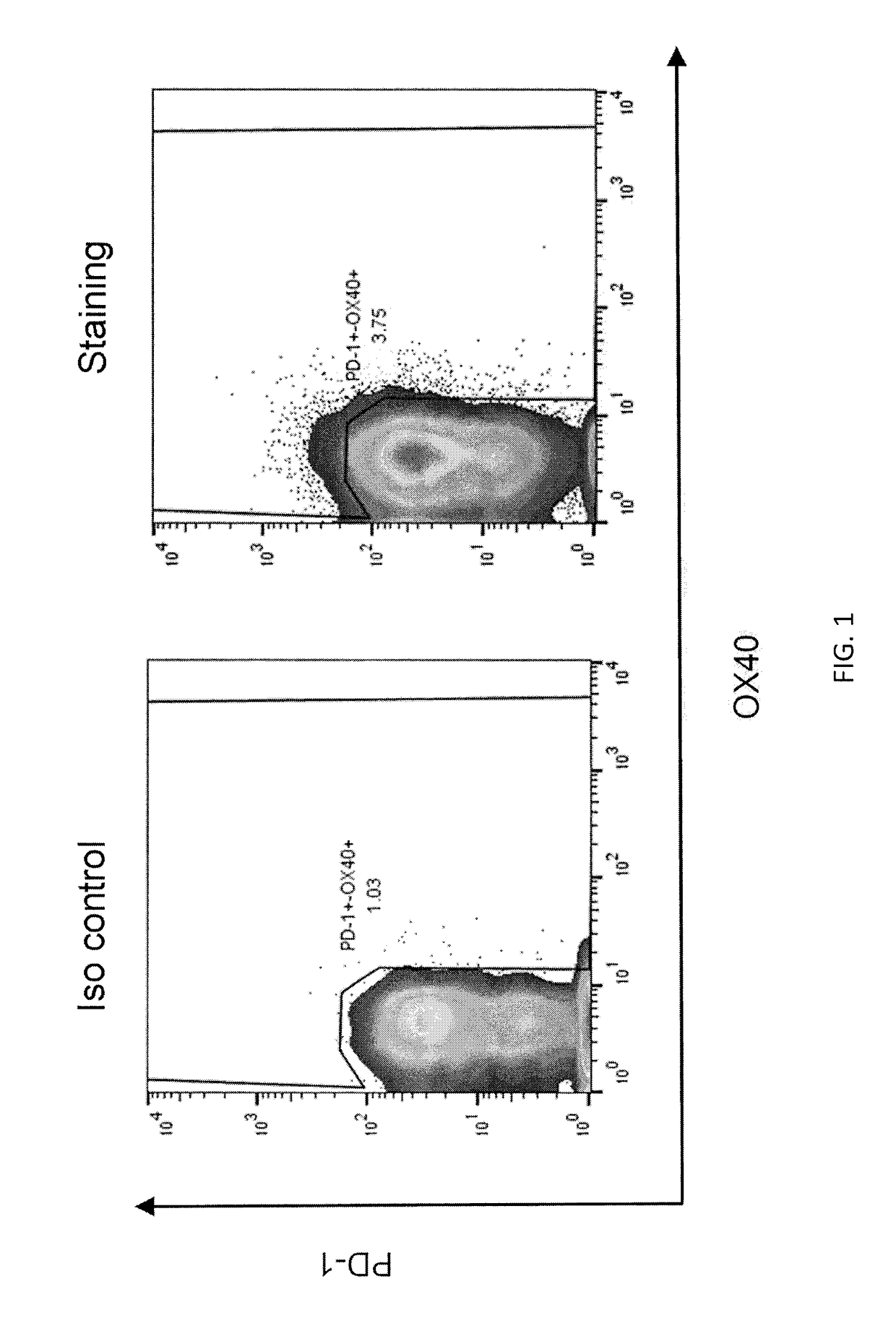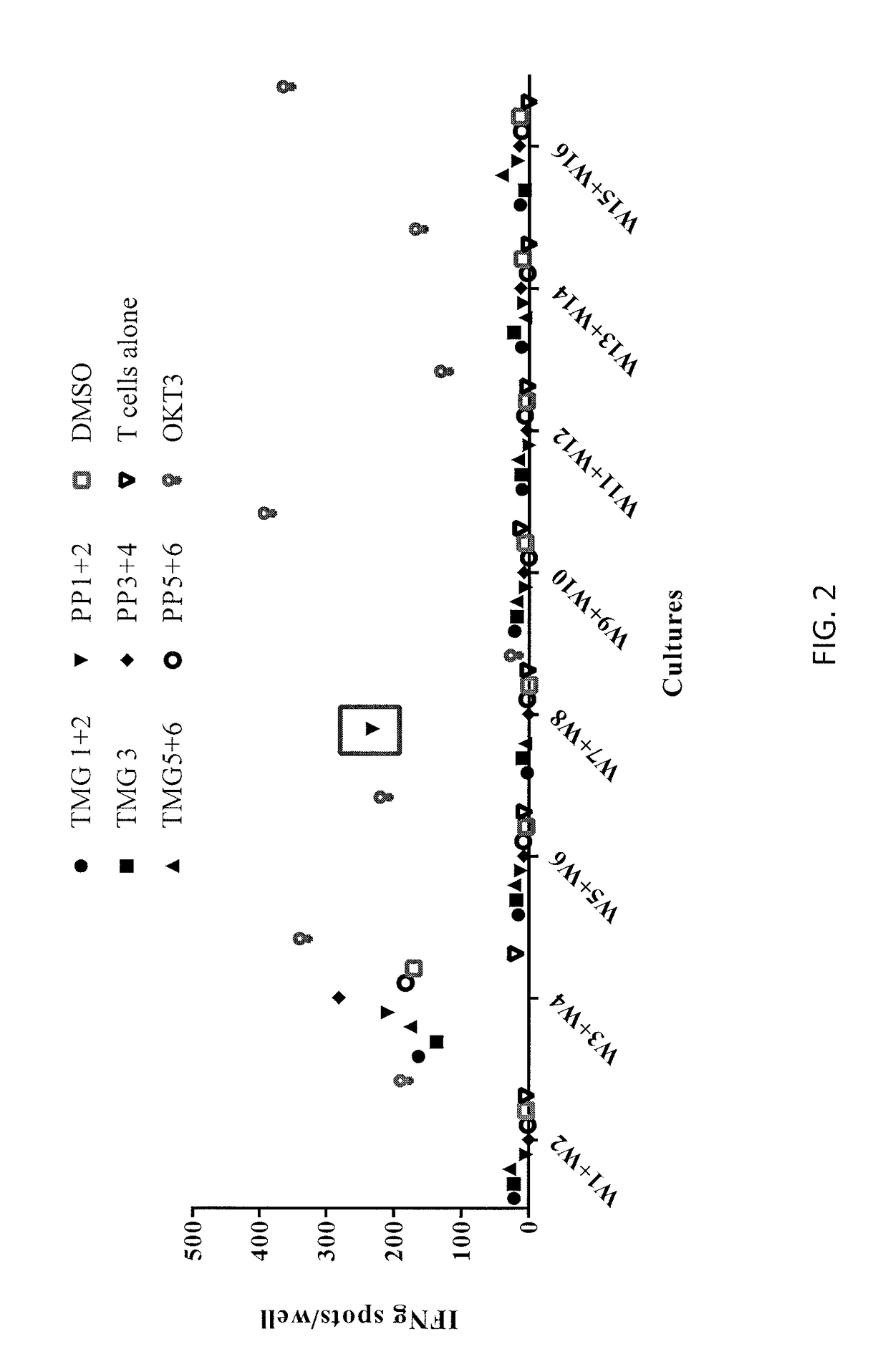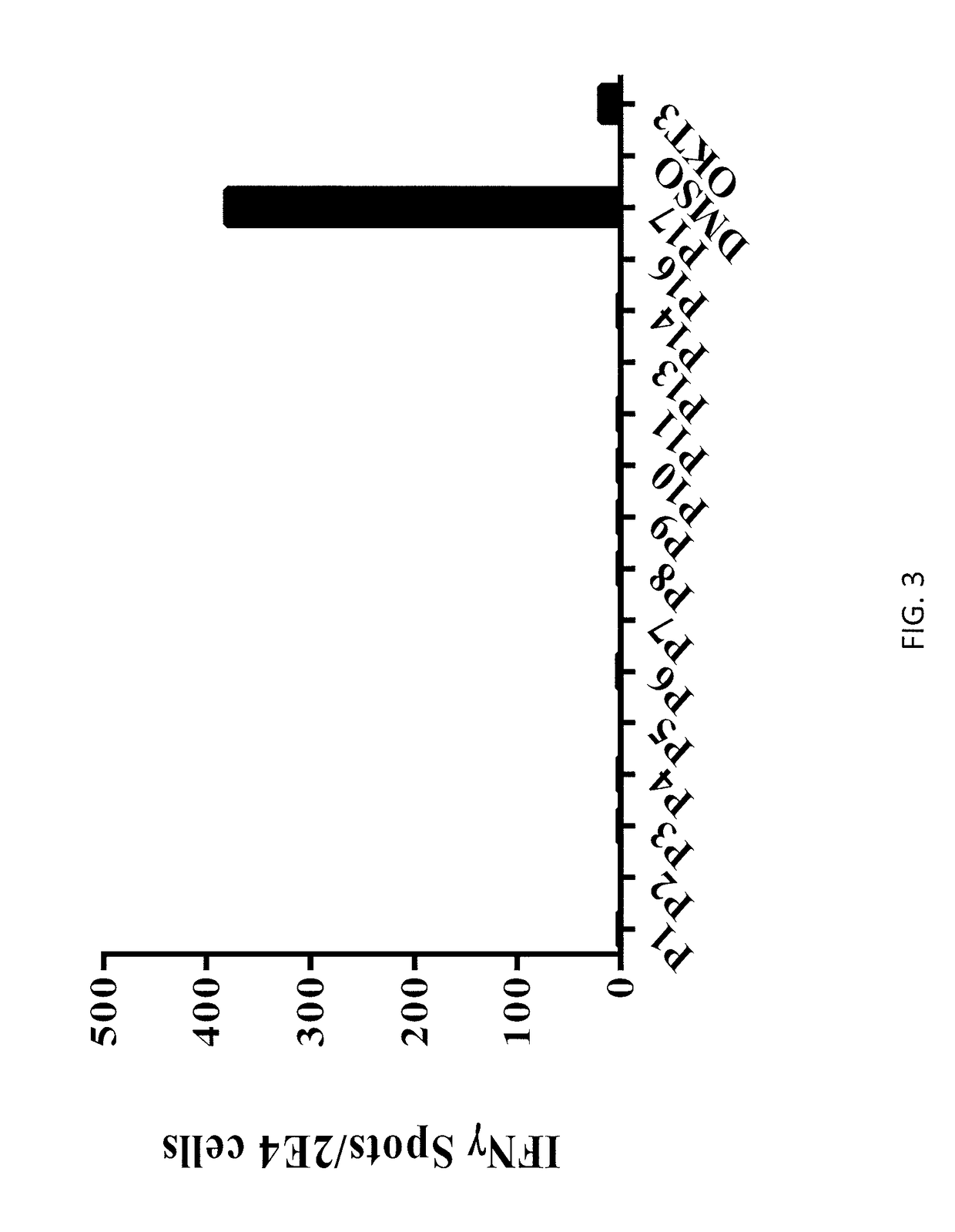HLA class ii-restricted t cell receptors against mutated ras
a t cell receptor and restriction technology, applied in the field of tcell receptor isolation or purification, can solve the problems of poor prognosis of many cancers, limited treatment options for cancers, and poor prognosis for many cancers, such as pancreatic, colorectal, ovarian, prostate cancer,
- Summary
- Abstract
- Description
- Claims
- Application Information
AI Technical Summary
Benefits of technology
Problems solved by technology
Method used
Image
Examples
example 1
[0123]This example demontrates the isolation of a TCR having antigenic specificity for human KRAS with the G12V mutation presented by an HLA-DRB1*07:01 molecule.
[0124]A TCR with antigenic specificity for human KRAS with the G12V mutation presented by an HLA-DRB1*07:01 molecule was isolated from an endometrial tumor sample from a patient. Briefly, the tumor sample was minced, digested, and frozen. Prior to cell sorting, the tumor digest was thawed and rested overnight without cytokines. T cells were sorted from the tumor digest based on PD-1 and\or OX40 expression (Gated on PI− (live cells)>CD3+) using FACS. The FACS results are shown in FIG. 1. Cells stained for isotype served as a control.
[0125]The numbers of sorted cells were expanded in accordance with the rapid expansion protocol (REP) for 3.5 weeks. For REP, the T cells were cultured in microtiter 96-well plates (3 cells\well) in the presence of OKT3 antibody, IL-2, and irradiated allogeneic PBMC.
[0126]The expanded numbers of c...
example 2
[0129]This example demonstrates that the TCR isolated in Example 1 recognizes KRAS G12V peptide antigen presented in the context of an HLA-DR molecule.
[0130]A nucleic acid sequence encoding the isolated G12V-reactive TCR of Example 1 (comprising the nucleotide sequences of SEQ ID NO: 42 and SEQ ID NO: 43) and including a cysteine substituted, LVL-modified murine constant region was cloned into a retroviral expression vector. The α chain murine constant region comprised the amino acid sequence of SEQ ID NO: 30 wherein X at position 48 is Cys, X at position 112 is Leu, X at position 114 is Ile, and X at position 115 is Val. The β chain constant region comprised the amino acid sequence of SEQ ID NO: 31, wherein X at position 57 is Cys. A linker comprising the amino acid sequence of SEQ ID NO: 54 was positioned between the α chain constant region and the β chain variable region. Allogenic T cells were transduced with the retroviral expression vector.
[0131]The transduced cells (effector ...
example 3
[0133]This example demonstrates that the TCR of Example 2 recognizes KRAS G12V peptide antigen presented in the context of an HLA-DRB1*07:01 molecule.
[0134]Allogeneic T cells transduced with the TCR of Example 2 (effector cells) were co-cultured with APCs autologous to the patient of Example 1 or APCs from donors with a DRB1 01:01 or DRB1 07:01 haplotype (target cells). Target cells were pulsed with KRASG12V peptide (SEQ ID NO: 53) or WT KRAS peptide (SEQ ID NO: 55). Effector cells were co-cultured with APCs from a HLA-DRB1 positive donor (wherein one, but not both, of the donor's alleles is DRB1*07:01) (“DRB mismatch”) as a control. Effector cells cultured alone, with DMSO, or with PMA-ionomycin served as further controls. IFN-γ secretion was measured by ELISPOT. The numbers of positive wells were counted. The results are shown in Table 7 and FIG. 5. In Table 7, “TNTC” stands for “too numerous to count.” The percentage of mTCR-expressing cells which express 4-1BB was also measured ...
PUM
| Property | Measurement | Unit |
|---|---|---|
| concentrations | aaaaa | aaaaa |
| concentrations | aaaaa | aaaaa |
| concentrations | aaaaa | aaaaa |
Abstract
Description
Claims
Application Information
 Login to View More
Login to View More - R&D
- Intellectual Property
- Life Sciences
- Materials
- Tech Scout
- Unparalleled Data Quality
- Higher Quality Content
- 60% Fewer Hallucinations
Browse by: Latest US Patents, China's latest patents, Technical Efficacy Thesaurus, Application Domain, Technology Topic, Popular Technical Reports.
© 2025 PatSnap. All rights reserved.Legal|Privacy policy|Modern Slavery Act Transparency Statement|Sitemap|About US| Contact US: help@patsnap.com



